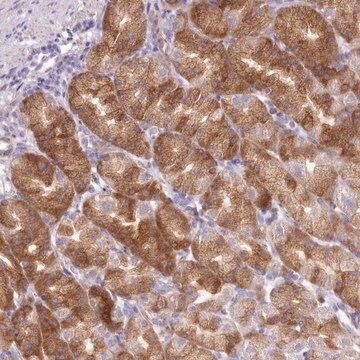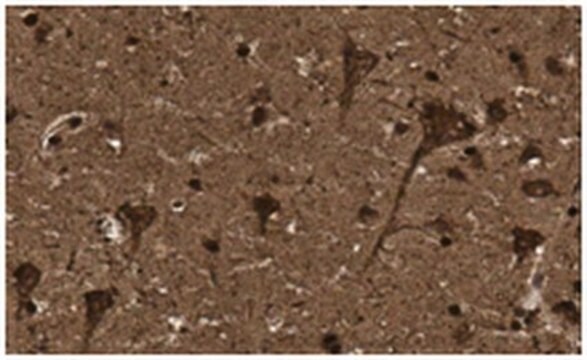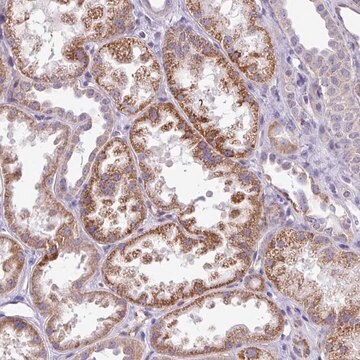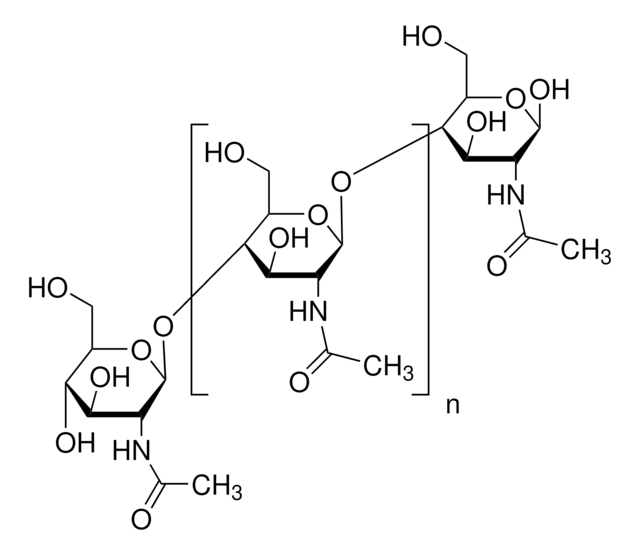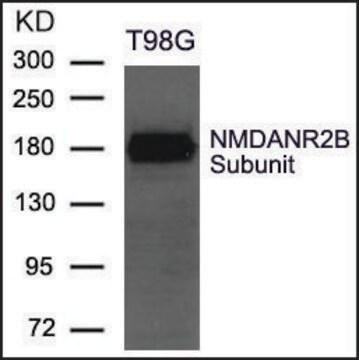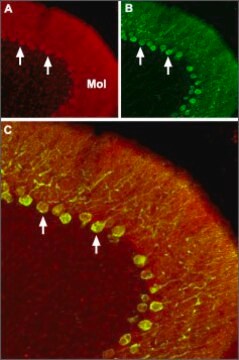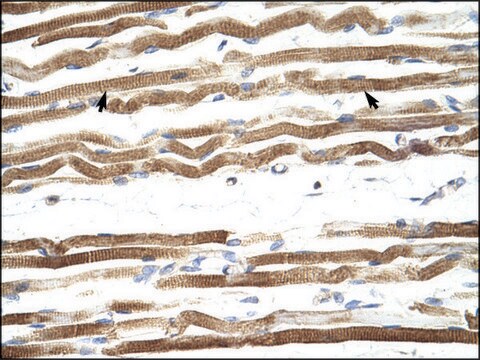MAB2226
Anti-Piccolo Antibody, clone 4G3.3
clone 4G3.3, from mouse
Synonim(y):
presynaptic cytomatrix protein, Aczonin
About This Item
WB
western blot: suitable
Polecane produkty
pochodzenie biologiczne
mouse
Poziom jakości
forma przeciwciała
purified antibody
rodzaj przeciwciała
primary antibodies
klon
4G3.3, monoclonal
reaktywność gatunkowa
mouse
reaktywność gatunkowa (przewidywana na podstawie homologii)
human (based on 82% homology), rat (92% homology)
metody
immunohistochemistry: suitable (paraffin)
western blot: suitable
izotyp
IgMκ
numer dostępu NCBI
numer dostępu UniProt
Warunki transportu
wet ice
docelowa modyfikacja potranslacyjna
unmodified
informacje o genach
human ... PCLO(27445)
mouse ... Pclo(26875)
Opis ogólny
Specyficzność
Immunogen
Zastosowanie
Representative images from a previous lot.
Piccolo staining pattern/morphology on mouse brain tissue/cerebellum. Tissue was pretreated with citrate pH 6.0, antigen retrieval. A previous lot of the antibody was diluted to 1:300, using IHC-Select Detection with HRP-DAB. Immunoreactivity is localized to the synaptic junction of neurons in the granular layer and Purkinje cells(arrow).
Neuroscience
Synapse & Synaptic Biology
Jakość
Opis wartości docelowych
Postać fizyczna
Przechowywanie i stabilność
Komentarz do analizy
Rat brain lysate, mouse cerebellum
Inne uwagi
Oświadczenie o zrzeczeniu się odpowiedzialności
Nie możesz znaleźć właściwego produktu?
Wypróbuj nasz Narzędzie selektora produktów.
Kod klasy składowania
12 - Non Combustible Liquids
Klasa zagrożenia wodnego (WGK)
WGK 2
Temperatura zapłonu (°F)
Not applicable
Temperatura zapłonu (°C)
Not applicable
Certyfikaty analizy (CoA)
Poszukaj Certyfikaty analizy (CoA), wpisując numer partii/serii produktów. Numery serii i partii można znaleźć na etykiecie produktu po słowach „seria” lub „partia”.
Masz już ten produkt?
Dokumenty związane z niedawno zakupionymi produktami zostały zamieszczone w Bibliotece dokumentów.
Nasz zespół naukowców ma doświadczenie we wszystkich obszarach badań, w tym w naukach przyrodniczych, materiałoznawstwie, syntezie chemicznej, chromatografii, analityce i wielu innych dziedzinach.
Skontaktuj się z zespołem ds. pomocy technicznej